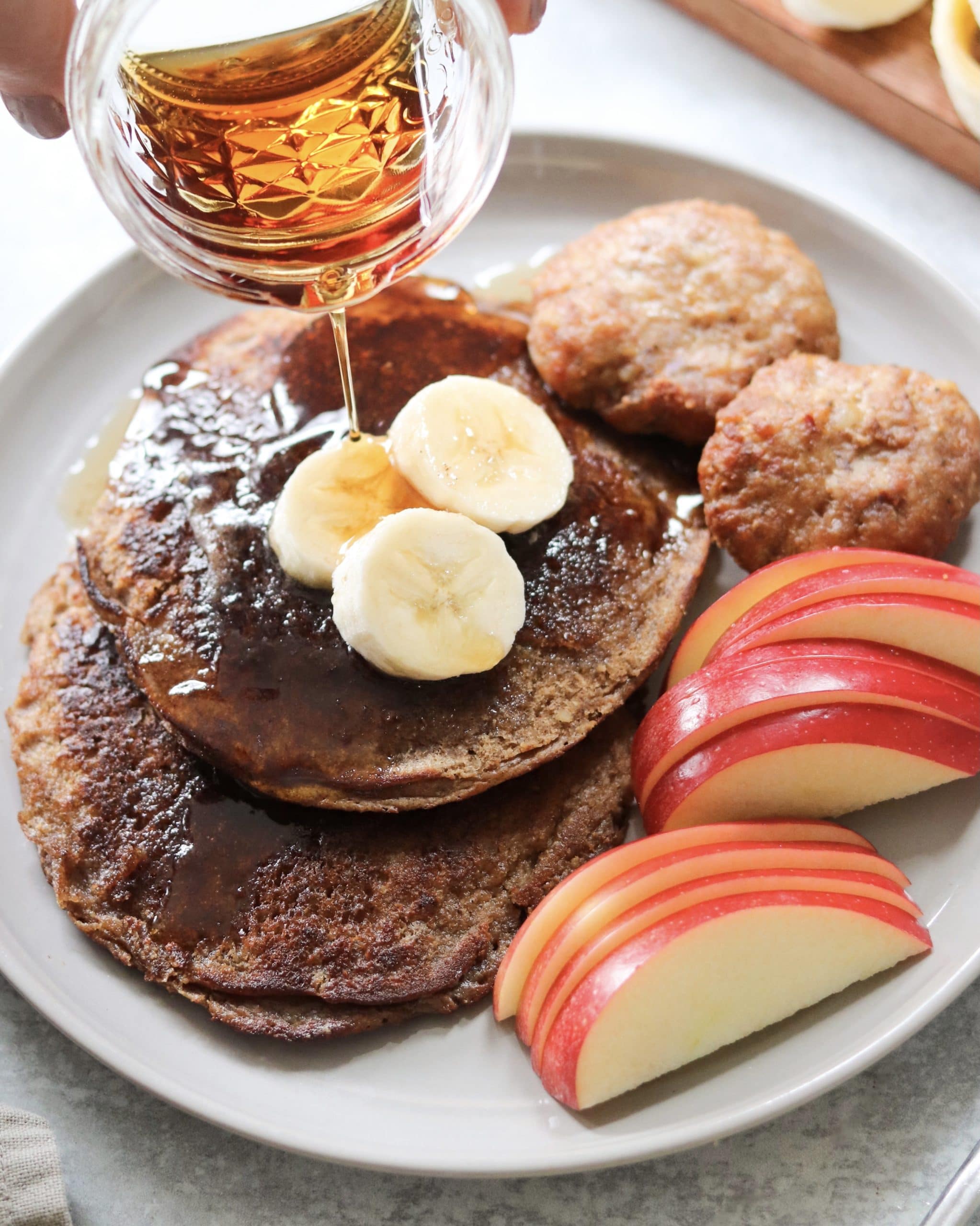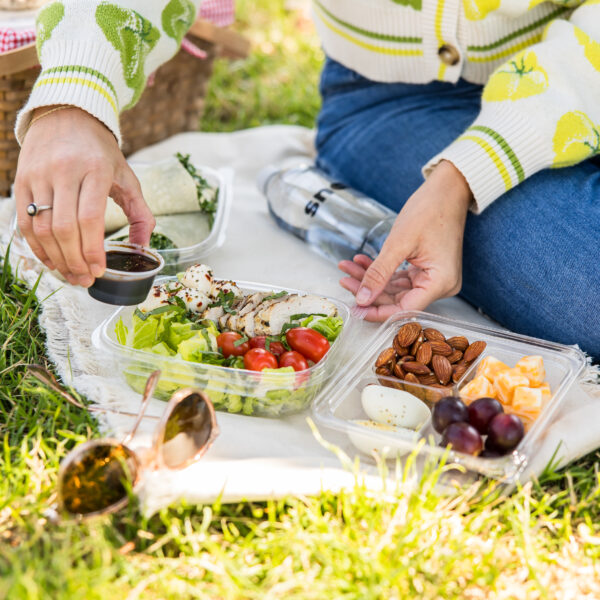At Snap Kitchen, we’ve talked about the benefits of intermittent fasting many times before. When done right, fasting can have many health benefits, like improved brain function, cancer prevention, better blood sugar control, a stronger heart, and weight loss. Whether you practice intermittent fasting or you fast for religious purposes (like Ramadan!), fasting will improve your overall health and metabolic function.
But did you know that after fasting, there are specific foods that will help ease the process of breaking your fast? In today’s blog, we’re going to talk about our favorite foods to do just that. But first, let’s review two common types of fasting.
Two Types of Fasting
1. Intermittent Fasting
Intermittent fasting is very popular, especially in the world of wellness. This method of fasting is essentially all about changing up your eating window. Unlike other types of fasting, intermittent does not specify the type of foods to be eaten. Instead, it focuses on how long a person should go without food. For example, you might fast from 7 pm-10 am and eat from 10 am – 7 pm, which makes for a 9-hour eating window.
Intermittent fasting is nothing new—in fact, it’s been around for centuries. Early humans were hunters and gatherers without any refrigerators, supermarkets, or a daily supply of food. During cold winters or hot summers, humans most likely went for days without food, yet they survived. Due to these prolonged periods without food, humans evolved and adapted to going without food for some time.
Benefits of fasting
Fasting gives your body a break from the process of digestion, so your cells and genes can focus on repairing themselves. This leads to a variety of health benefits for both your body and brain, including:
- Extending your lifespan and quality of life.
- A drop in insulin levels for those with type 2 diabetes or blood sugar dysregulation.
- Increase in mental clarity, focus, and overall alertness.
- Easier to lose weight and maintain that weight loss over time.
How to Practice Intermittent Fasting
When intermittent fasting, you can break up your schedule in the following ways:
- 16:8 Fast
This method is most commonly practiced by skipping breakfast to adapt to an eating period of 8 hours. For instance, you can decide that you will only eat meals between 1 pm to 9 pm. You will then go without any meal for the remaining 16 hours of the day. This one is particularly easy to implement and typically allows for two meals a day.
- 12:12 Fast
This means you fast for 12 hours, and eat in a 12-hour window. So, that can mean abstaining from eating from 9 am – 9 pm, 12 am – 12 pm, etc. This is a great option for first-timers as it’s the most similar to a traditional eating schedule.
- 20:4 Fast
This method involves fasting for 20 hours and making sure to eat enough calories within a four-hour window. This is recommended for those with prior fasting experience and is not for beginners. As this is a more intense method, the results are more drastic, including deeper sleep, but it also has potential side effects, including nutrient deficiencies.
- Full 24 hour Fast, or the “Eat-Stop-Eat” Method
This type of fasting involves going for a full 24 hours at least once or twice a week without food. Fasting for 24 hours can have major benefits, like helping to reset gut bacteria and improving cardiovascular health. However, it should only be taken on by those with plenty of fasting experience or those whose doctors have recommended this fasting option.
- 5:2 Diet
The 5:2 diet practice involves consuming about 600 calories for two days of the week (non-consecutive) and eating normally on the remaining 5 days.
2. Water fasting
Water fasting is the fasting method of going without any food for a specific period of time and only drinking water. This type of fasting is mostly used for religious purposes, like during Ramadan.
People looking to practice water fasting are advised to select a period when they will not need to exert too much energy. Doctors recommend that water fasting should not exceed 3 days as there may be health risks to going without food for extended periods of time.
Which Groups are Advised to Avoid Water Fasting?
- Adults over 60
- Anyone below 18
- Underweight people – Water fasting causes your body to use stored fat to create energy, which leads to weight loss. So, this could be especially dangerous if you’re underweight.
The Groups that Benefit from Water Fasting
There are many positive health benefits of short-term water fasting (1-to-3 days) that people with the following health conditions could benefit from:
- Diabetes
- Obesity
- Heart disease
- High cholesterol levels
- High blood pressure
Water Fasting Benefits
- Since water fasting requires your body to use the energy reserves you already have, it promotes a process called autophagy—where your cells are broken down and recycled within your body. Studies have shown that this process helps to decrease the risk of cancer, Alzheimer’s, and heart disease.
- Helps decrease blood pressure in those who practice long-term water fasting. In one study, “174 people with high blood pressure water fasted for an average of 10–11 days. At the end of the fast, 90% of people achieved a blood pressure lower than 140/90 mmHg — the limits used to diagnose high blood pressure. Additionally, the average fall in systolic blood pressure (the upper value) was a substantial 37 mmHg.”
- Can help boost insulin and leptin sensitivity – this is particularly good news for those dealing with Type 2 Diabetes.
Foods to Break a Fast
Eating the wrong foods after a fast can have adverse health effects, and that’s certainly not what we’re going for. Below is a list of different options you can include in your first post-fast meal to help you break your fast the easy way.
Breaking Your Fast with Carbohydrates
This is not our first recommendation, but you can include complex carbohydrates when breaking your fast. We prefer complex carbohydrates over simple ones since they contain more nutrients and fiber. You’ll see some of our favorite sources of complex carbs below. If you are eating these carbs, pair them with protein or fat (or both!) to minimize your body’s blood sugar response.
- Rice (whole grain black, brown, or wild)
- Corn
- Yams
- Sweet potatoes
- Fresh fruit
- Frozen fruit
- Buckwheat
- Quinoa
- Lentils
- Oats (rolled, cut, or old-fashioned)
- Greek yogurt (full-fat)
Breaking Your Fast with Healthy fats
Healthy fats are a great way of adding nutrients to your body, especially if you’re ending a water fast. You can obtain healthy fats from different sources such as nut butter, avocado, extra virgin olive oil, and nuts.
Foods with healthy fats include:
- Full-fat cheeses
- Unprocessed coconut
- Egg yolks
- Seeds (examples include pumpkin, chia, hemp, sesame, and flax)
- Nuts (examples include brazil, cashew, pistachio, peanut, almond, walnut, and pecan)
- Cooking fats and oils (grass-fed butter or ghee, coconut oil, pasture-raised animal fats, or extra-virgin olive oil)
Breaking Your Fast with Vegetables
Vegetables are another great option to consider when thinking of how to break your fast. They come in many shapes, textures, colors, and flavors. Here are some veggies we think are great for breaking your fast with:
- Broccoli
- Peppers
- Cauliflower
- Eggplant
- Mushrooms
- Radishes
- Tomatoes
- Beets
- Onions
- Carrots
- Cabbage
- Garlic
- Asparagus
- Squash
- Leafy greens (kale, spinach, spring mix, arugula, and collards)
- Green beans
- Cucumbers
- Celery
Breaking Your Fast with Fermented Foods
We LOVE fermented foods! Fermented foods help to increase the number of good bacteria in your gut (and sometimes feed them too!) that will help to improve your overall gut health.
Here are some examples:
- Kefir
- Full-fat dairy or coconut-based yogurt
- Fermented veggies
- Natto
- Sauerkraut
- Tempeh
- Miso
- Kombucha
- Kimchi
Breaking Your Fast with Proteins
When breaking your fast with proteins, be sure to select those that are as unprocessed as possible. Although most protein sources are animal-based, there are plant-based proteins for vegetarians, such as lentils and legumes. Other examples of proteins to consider after a fast include:
- Eggs
- Beef
- Fish
- Chicken
- Wild game
- Greek yogurt (plain)
- Bison
- Pork
- Turkey
- Cottage cheese
Breaking Your Fast with Soups
Soups are also great for breaking a fast because they are gentle on the digestive system. Soups made with bone broth that includes high-quality protein, non-starchy veggies, and healthy fat are best.
Breaking Your Fast with Smoothies
Drinking a smoothie after your fast can be an easy way to introduce a variety of nutrients in an easier-to-digest manner. We recommend minimal fruit (¼-½ cup), plenty of protein (in the form of a protein powder like whey, organic pea, or other options), veggies, and healthy fats (like coconut oil, avocado, and more!).
Breaking Your Fast with Bone Broth
Bone broth is bottled magic. It contains numerous amino acids, along with collagen and gelatin. Glutamine (one of the amino acids) is known for gut-healing and immune-supportive benefits. Not only can it help treat and prevent leaky gut, but it can also help to tame sugar cravings! Bone broth is also a great source of glycine, which can support restful sleep and help prevent sleep fragmentation. Collagen and gelatin both have great benefits for gut health, as well as skin, hair, nails, and teeth. Gelatin also aids in immune health as well as the prevention of muscle loss and the promotion of joint health, skin health, and the prevention of skin aging.
Overall, depending on the intensity of your fast, you must ease your body back into digestion mode with unprocessed, nutrient-dense food. It’s easy to get excited for a big meal after fasting all day, but start small and listen to your stomach. Most importantly, avoid highly processed or fried foods as these can be difficult to digest even when your digestive system is up and running.
Do you have experience with fasting? Share any tips for beginners in the comments below!






Leave a Reply
No Comments